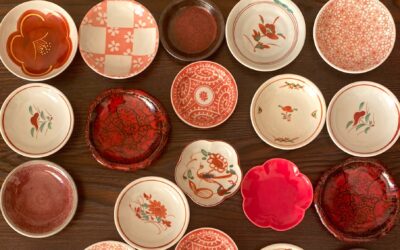
Kitchen Culture Cooking Club
EXPLORE and PRACTICE Japanese cooking in your own kitchenAbout Kitchen Culture Cooking Club
Welcome to the Kitchen Culture Cooking Club, a community space providing encouragement to those who want to EXPLORE and PRACTICE Japan’s washoku wisdom in their own kitchens.
To facilitate this, themed projects will be posted to this page periodically. Project Assignments and links to relevant reference material stored on this site will be posted to this page. Anyone, anywhere in the world, with a sincere interest in Japanese food culture is welcome to browse the contents of this page and then replicate the themed project in their own kitchen.
For those who wish to display-and-discuss their projects with like-minded people, I invite you to join the KITCHEN CULTURE Cooking Club Facebook Group (formerly the TSUDOI Project), an interactive community space.
PROJECT Katsura Muki

PROJECT Katsura Muki
This PROJECT is about learning to make katsura muki, a classic cutting technique in the traditional Japanese kitchen. When done properly, long, flowing, continuous and incredibly thin peels are produced from vegetables such as daikon radish, cucumbers and carrots.
In researching the subject of becoming proficient in making katsura muki peels I consulted dozens of websites in both Japanese and English. All agreed the following three points are critically important:
- choice of knife (single bevel wabōchō is best)
- condition of your knife (sharp!!)
- proper positioning of knife (and your hands/body)

All sources I consulted, including chefs, further agreed that PRACTICE, daily practice for a minimum of one month, was the only path to achieving real success.
In Japan, daikon radish is the vegetable of choice for mastering this basic cutting technique. But those who reside outside Japan may find cucumbers more readily available (and certainly less expensive) for practice sessions.
Japanese carrots are plump, allowing you to cut long, continuous peels. But carrots in America (and many other parts of the world) tend to be slender, making them a bit more challenging to use.
Japanese knives 和包丁(wa-bōchō)
Traditional Japanese knives (wa-bōchō) boast single bevel blades (kataba 片刃). They are especially well-suited to peeling vegetables katsura muki style.
The knife pictured on top is the kind most often found in the Kansai area (Osaka, Kyoto and environs) while the one pictured on the bottom is more commonly found in the Kanto area (Tokyo and environs).
Finely shredded daikon
Once you are able to produce thin katsura muki peels, you can create a finely shredded daikon garnish. On the left, short lengths of katsura muki peels have been stacked and then sliced WITH the grain. This produces a vertical tower.
On the right, short lengths of katsura muki peels have been stacked and then sliced AGAINST the grain. This produces a soft, cloud-like pile that is often the backdrop to sliced sashimi

Resources for knife sharpening & maintenance
A wonderful resource, in English, about knives can be found at the KORIN website.
One of the best videos I watched in English about sharpening knives, both single and double-beveled blades, was at the website of a knife and sharpening stone company called MUSASHI
One of the best videos, in Japanese, about katsura muki was by Knife chef|oiri_kitchen. (By the way, he holds the Guinness Book of Records title for 2025 for the longest, continuous katsura muki peel: a whopping 15 meters 11 centimeters long!!!)
The video has English subtitles though some are awkward literal translations such as “wig removal” for katsura muki.
Focus on the action, noting especially how he holds the knife and positions himself in relation to his cutting board. Notice, too, the importance of triming your daikon segment to be sure it is a perfect cylinder before you start peeling.

Fancy roll-ups
Once you can produce long, thin, continuous peels from daikon (or cucumber or carrots) you can use these to create attractive appetizers.
Download a copy of my November 2025 newsletter about KATSURA MUKIpeeling.
Recipes and Resources
Stock (Dashi)
Dashi stock is essential to making soups and simmered or stewed dishes. Dashi is also used when making many egg dishes and all sorts of sauces, dips and dressings. Using good dashi will make a noticeable difference in the outcome of so many dishes you prepare.
Click to download recipes for (vegan) Kelp Alone Stock or Standard Sea Stock + Smoky Sea Stock
How to Cook Rice
In Japanese, the word for cooked rice, ご飯 GOHAN, is the same as the word for a meal, ご飯 GOHAN. Indeed rice is central to the meal. Download the Rice with Mixed Grains recipe.
How to Prepare Sushi Rice
Sushi dishes are made with rice that has been seasoned (with sweetened vinegar) AFTER being cooked. Download the Classic Sushi Rice recipe.
Quick Pickles
The Japanese enjoy a wide variety of tsukémono pickles, many can be assembled quickly and are ready to eat within a short time.
Download a recipe for Quick-Fix Hakusai Cabbage.
PROJECT: Celebrating Tanabata
The Tale of TANABATA 七夕伝説 The Tale of Tanabata, which originated in China, has been told in Japan for at least 1200 years. The Japanese version tells the story of a cowherd (Kengyū in some versions, Hikoboshi in others, as the star Altair), and the Weaving Princess...
PROJECT Small Plates
MAMÉ-ZARA FunCollecting and Using Small Plates Part of the fun of collecting dishes and other tabletop accessories, is to assemble wide-ranging variations within a category. With mamé-zara, one way to do this is focus on a color scheme such as red and then collect as...
PROJECT Springtime Sweets
洋菓子・yōgashiWestern-Style Confectionery Japan's food culture includes ingredients, techniques and dishes that have been adopted and/or adapted from non-Japanese sources. One large category is confectionery. Earliest influences were from the Portuguese in the 16th...
Celebrating Sakura
The Japanese take great pleasure in celebrating the seasons and SAKURA (cherry blossoms) are emblematic of spring. From the time buds (tsubomi 蕾) first appear to the official pronouncement of blooming (kaika 開花) it is often less than a week. And from there to...






